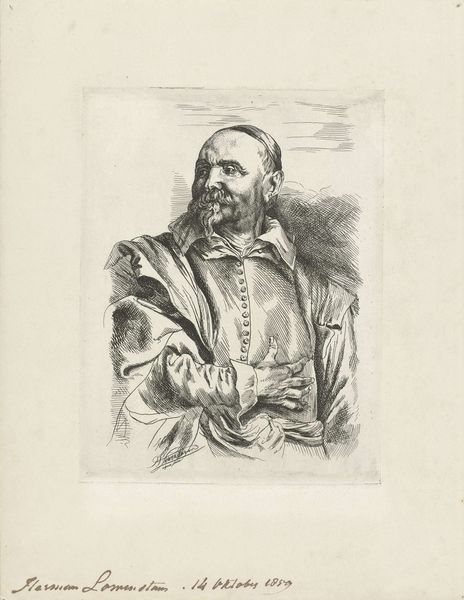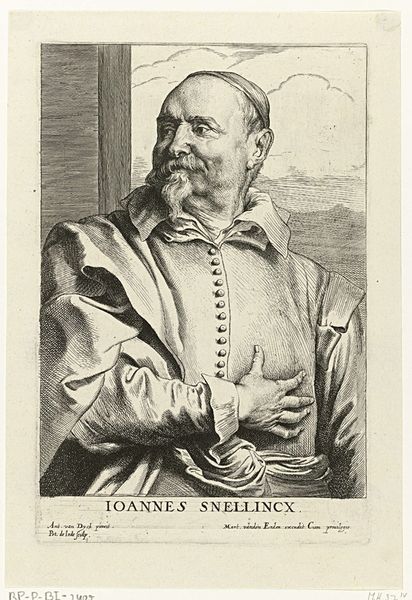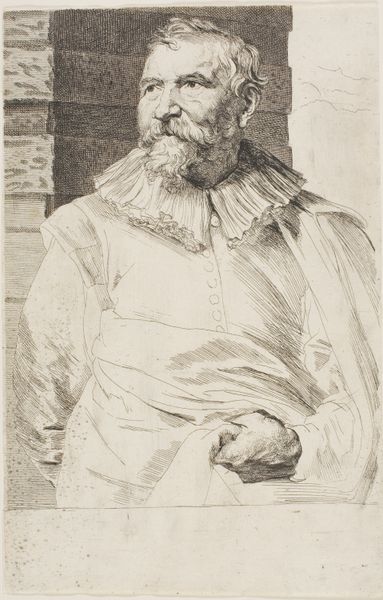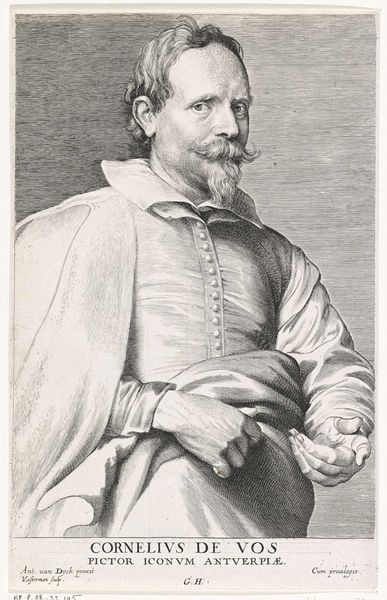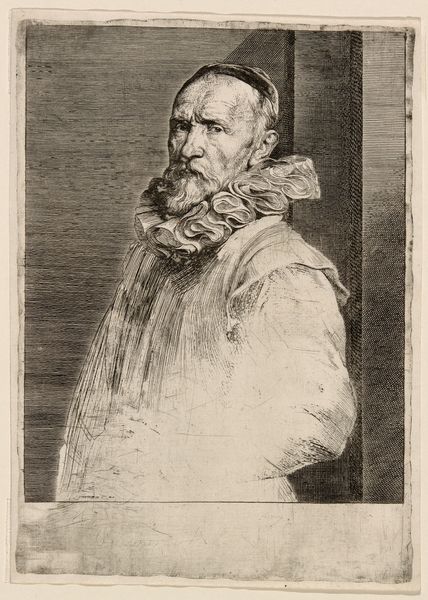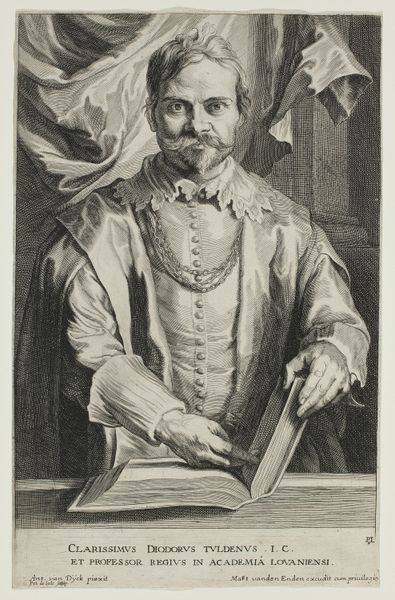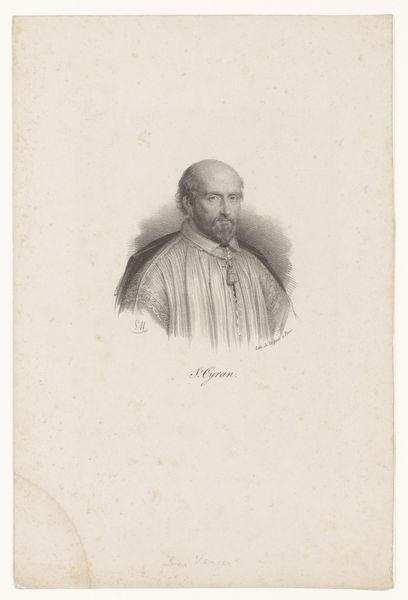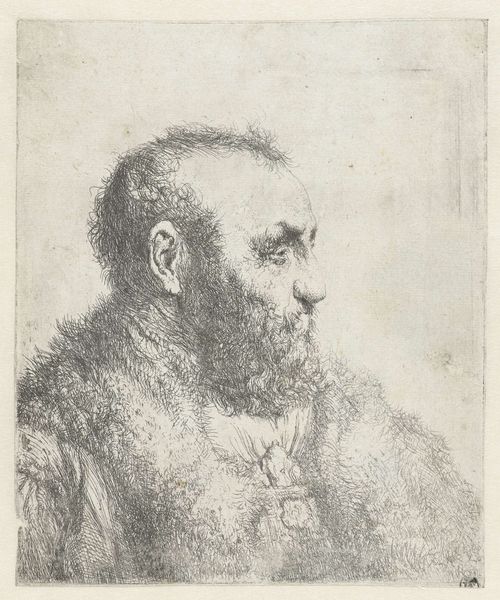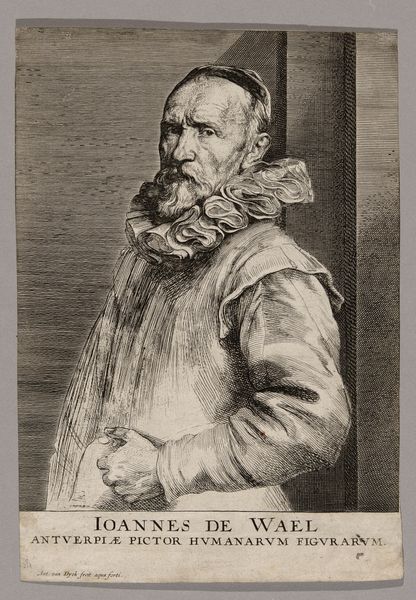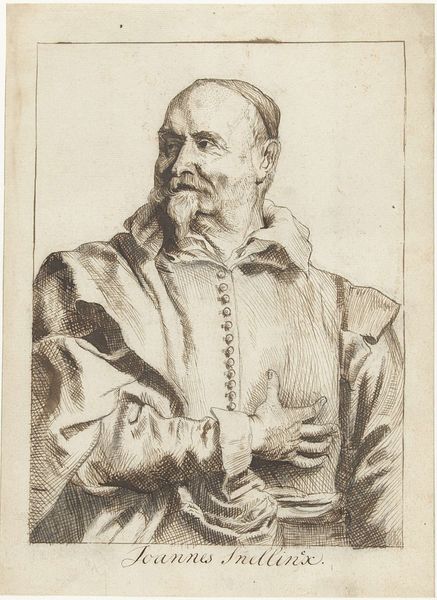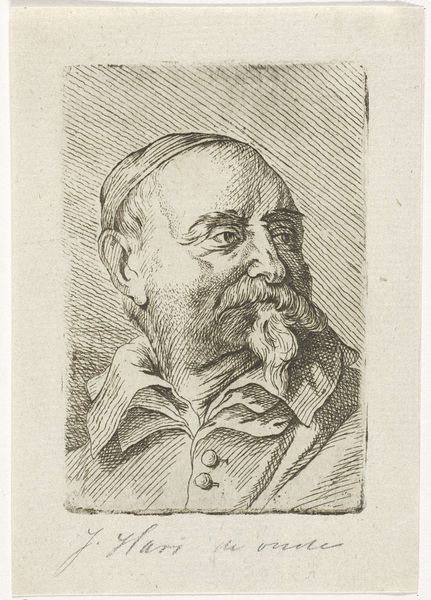
drawing, print, etching, paper
#
portrait
#
drawing
#
baroque
#
dutch-golden-age
# print
#
etching
#
paper
#
portrait drawing
Dimensions: 245 × 155 mm (image/plate); 374 × 245 mm (sheet)
Copyright: Public Domain
Editor: Here we have Anthony van Dyck’s portrait etching of Jan Snellinx, made sometime between 1630 and 1633. It has a really direct, almost confrontational quality. The lines are so sharp and the gaze so…piercing! How do you interpret this work in terms of its historical context? Curator: This etching provides a fascinating glimpse into the social circles of the Dutch Golden Age. Consider how portraiture functioned then, it was as much about documenting status and influence as it was about capturing likeness. Van Dyck, himself a celebrated artist, was part of an elite artistic circle. Do you notice anything about Snellinx’s attire or pose? Editor: Well, he's wearing very fine clothing, a collared shirt under what looks like a doublet with many buttons, so probably of some means, but the hand gesture, with the fingers tucked into the chest…it feels staged somehow, and conceals more than it reveals? Curator: Exactly. It's not merely about individual expression; it speaks to the politics of self-representation within the social structures of the time. Van Dyck likely aimed to present Snellinx in a light befitting his station, solidifying his cultural relevance through this image and through print, thus broadly distributed and lasting over time. Does understanding this change how you perceive the ‘confrontational quality’ you mentioned initially? Editor: I think it adds a layer of complexity. It’s not just a direct gaze; it’s a performance for a specific audience, curated and then amplified for public consumption, and in fact creates the very definition of celebrity, that circulates regardless of talent. Curator: Precisely. The 'performance,' as you put it, becomes a crucial element of the artwork’s lasting impact, far beyond just individual artistic accomplishment. This brings up critical questions about how fame is constructed and distributed through imagery. Editor: So this image isn't just art; it's historical documentation shaped by social forces. Thanks, that perspective really opens up a richer way to appreciate it. Curator: Indeed. Seeing art as a product of its time, shaped by power dynamics and social expectations, allows us to decode it more profoundly.
Comments
No comments
Be the first to comment and join the conversation on the ultimate creative platform.

